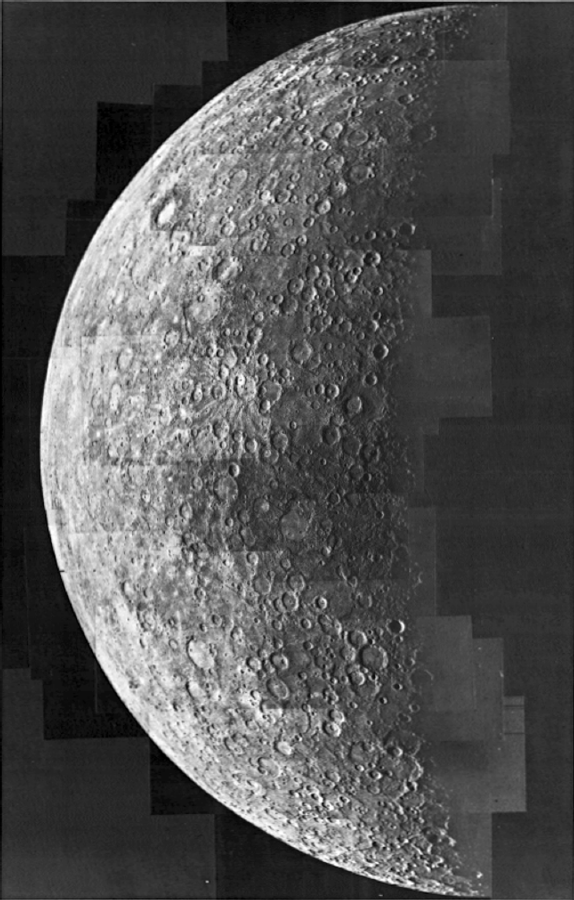
There are craters.
Not as many as on the lunar highlands.
More than in the lunar maria.
This suggests that the crust of Mercury formed a little later than the crust of the Moon, but not as late as the maria on the moon.

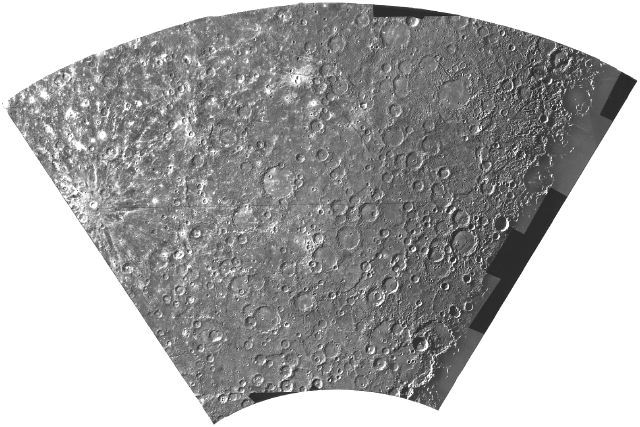
Here is another mosaic of Mercury.
Note smooth areas, suggesting lava flows.
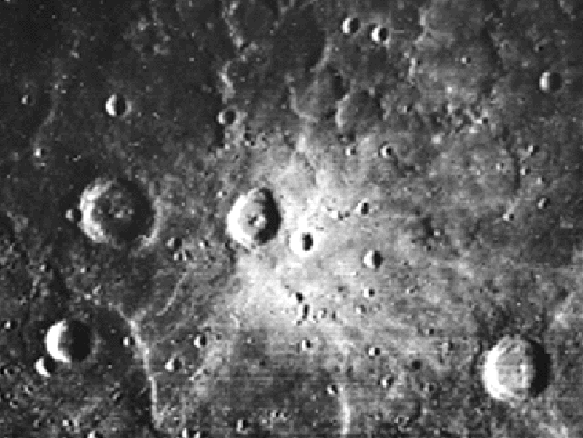
Mercury close up.
The small, bright halo crater is 10 km in diameter.

Caloris Basin (located half-way in shadow).
The Caloris basin is 1,300 kilometers in diameter.
It was presumably formed from an impact of an asteroid size rock.
The interior floor of the basin contains smooth plains but is highly
ridged and fractured.
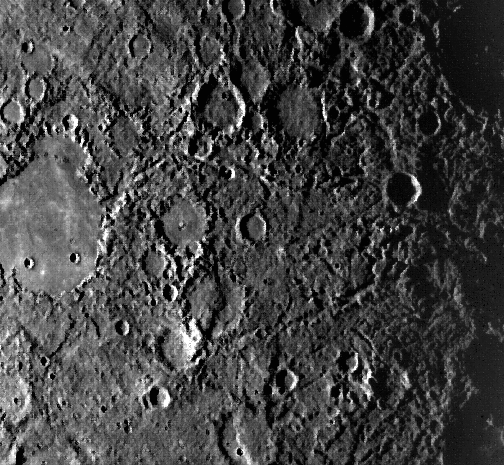
Hilly region opposite the Caloris Basin.
Were the hills made by seismic waves from the Caloris impact?
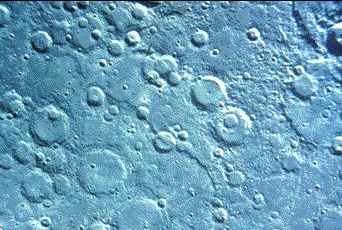
A long scarp.
It cuts through craters.
A wrinkle formed as the planet shrank a little?
See also Caloris Basin for what look like wrinkles.
Davison E. Soper, Institute of Theoretical Science, University of Oregon, Eugene OR 97403 USA soper@bovine.uoregon.edu